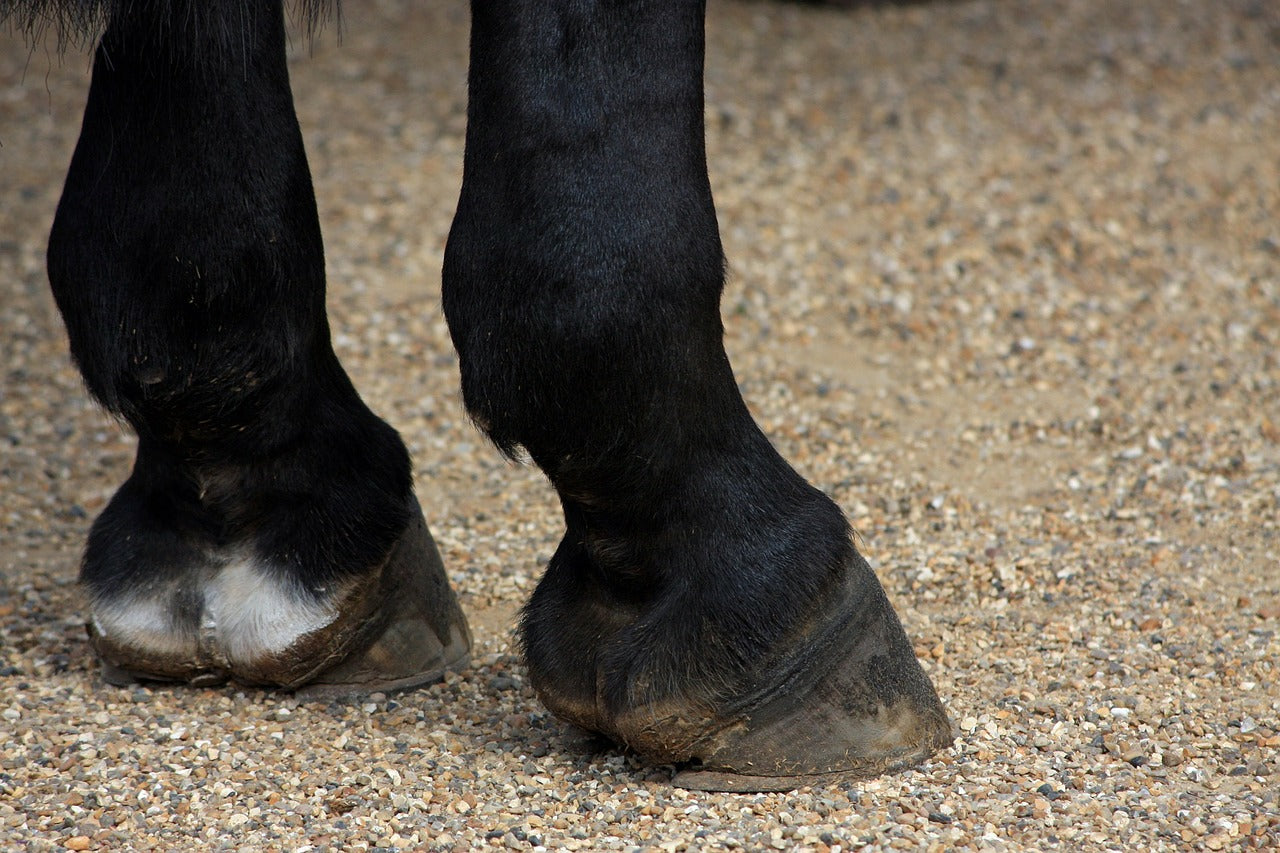If your horse has “good feet”, it’s easy to overlook potential issues when they start to develop. If you have struggled with any sort of hoof issue then you already know how much time and energy it can take to keep your horse’s feet in top shape. With dozens of hoof-specific supplements on the market, it can be incredibly frustrating if you don’t see results, even after following the directions and waiting the recommended amount of time. So, what gives?
What’s in a Hoof?Horses are known as Perissodactyls. This essentially means they are single-toed animals, as opposed to other ungulate mammals, such as cattle and goats, who have two toes. Your horse’s hooves, much like your own fingernails and toenails, are made up of proteins called keratins. These proteins develop a thick, protective layer around the inner structure of the hoof. Obviously, a horse’s hooves are like singular, giant toenails. Each of their hooves has to support a great deal of weight and take an enormous amount of pressure and impact. Because of this, it’s essential that the keratin wall is as strong as possible while maintaining some flexibility to prevent splitting or fractures. A Gut FeelingHoof health, just like every other part of your horse’s body, begins in his gut. His health is directly related to how well he can digest his food and assimilate the nutrients released from that feed. Regardless of whether you’re feeding an all-forage diet or mix it up with some concentrated feeds (such as sweet feed), his ability to absorb and utilize the different components of that food depends wholly on his overall gut health. By the time his body gets to his hooves, there may not be adequate amounts of nutrients available to build and maintain strong, healthy hoof tissues. There are many reasons your horse may not be able to absorb the necessary level of nutrients. He may have active ulcers or a subclinical ulcer condition that is keeping him from being able to completely digest his feed. There could be damage to the digestive tract from a previous illness or he didn’t receive adequate colostrum as a foal. The possibility of a burgeoning parasitic load could be keeping him from receiving nourishment. Regardless of the reasons, one of the first places you may see the effects of poor absorption is in his hooves. At this point, the most important thing is to get his digestive system in top shape. Developing a Healthy Digestive SystemBefore you start throwing money at numerous expensive “hoof health supplements”, there are several things you can do to help improve your horse’s gut health and thus, his hooves. Here are some things you can do to combat poor nutrient absorption.
There is obviously more to hoof health than just good nutrition but it is the most important place to start. Other considerations should include footing, exercise and bedding conditions. If you suspect your horse has hoof issues, always consult with your veterinarian and farrier. They may be able to pinpoint the exact issues and get your horse on the right path to hoof wellness. Related Posts How to Minimize Travel-Related Ulcers in Horses |





